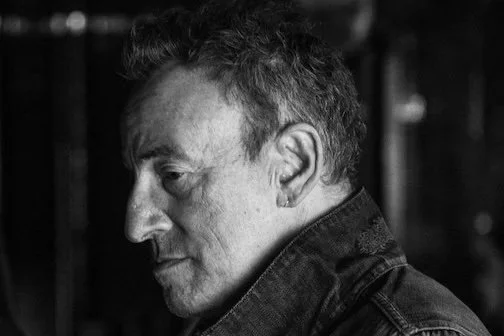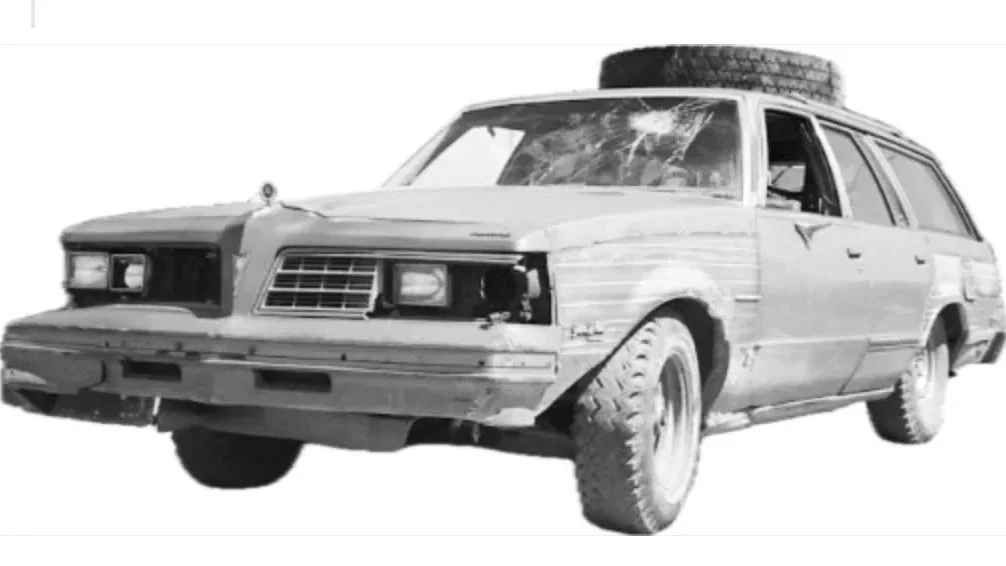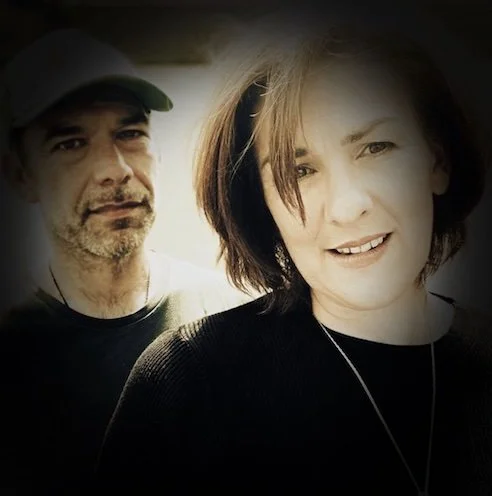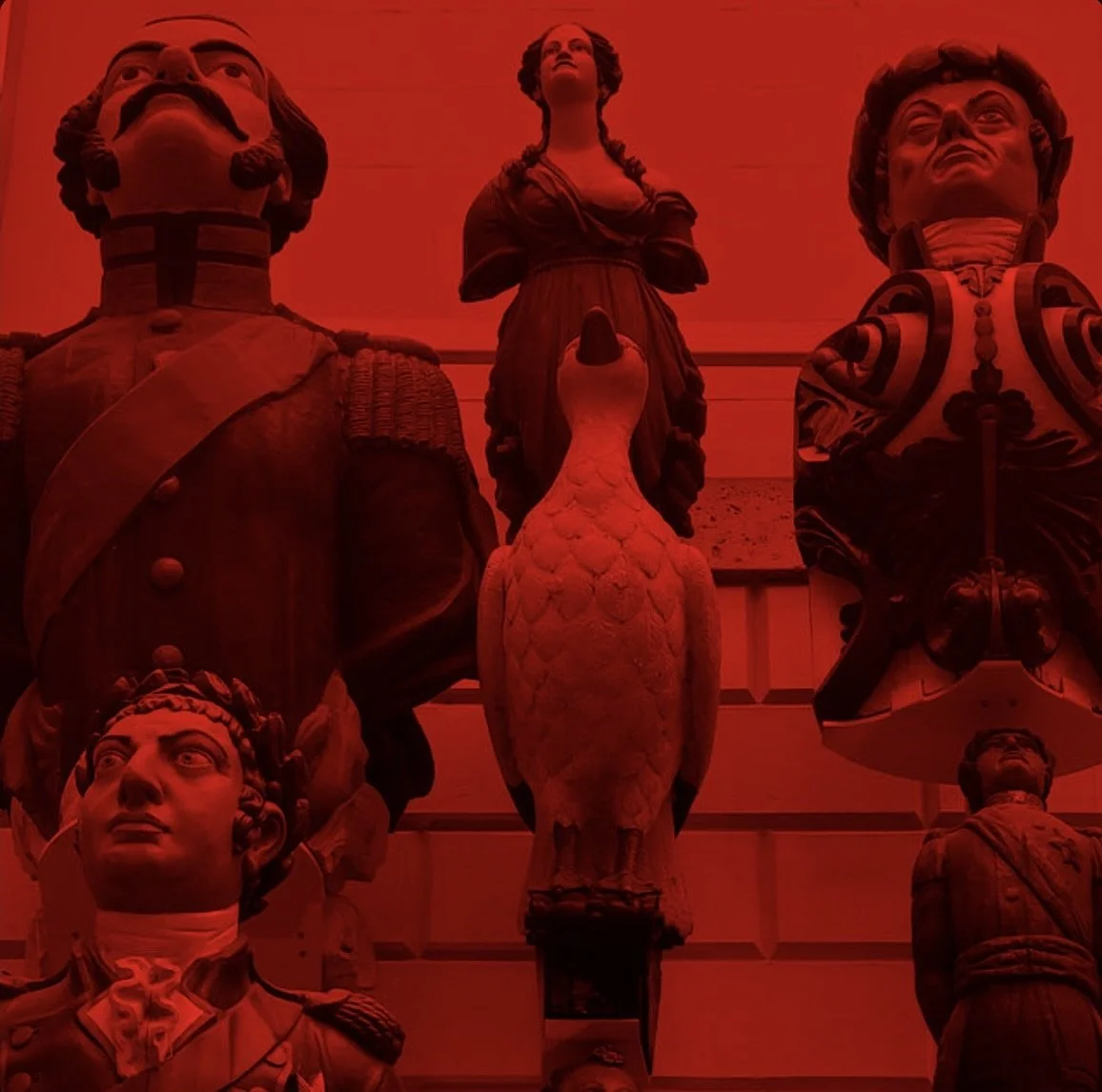THE ‘ONE TO WATCH’ INTERVIEW
Balloon: ‘I know people who rate Gravity among their favourites. There was trepidation about the new LP’
Their 1992 debut, Gravity, was widely heralded and they seemed set for glory. And then years of silence. Balloon’s Ian Bickerton tells us what happened, and why it took three decades to make their follow-up.
Questions by David Rea
25 October 2025
David Rea: What’s your earliest memory of hearing music?
Ian Bickerton: My mother was an opera singer. When I was a kid, she’d sit at the piano in the front room and let rip, usually with something from Puccini (La Bohème was a favourite), or a showtune. Always at max volume. She was a soprano. I hands-over-ears hated it. However, on the plus side, I do still know all the words to ‘Wouldn’t it be Loverly’ from My Fair Lady.
Was there a music fan in your early life who you looked up to and influenced your music taste?
My older brother, David. He introduced me to the Velvet Underground, Iggy, Bowie, Roxy Music. I went to an all-boys school where most of the kids were into Emerson, Lake & Palmer or Yes. I hated that music. I loved Kate Bush, however, though I kept that to myself!
What was your parents’ record collection like? How did it influence your sensibilities?
They didn’t own any records. We didn’t have a record player. My mother had sheet music, which she stored in the piano seat. I still have some of it, although I can’t read music. My dad was a Paul Robeson fan. My mum loved Kathleen Ferrier. I guess their taste led me to what you might call ‘classic songwriting’, where melody and lyrics blend seamlessly.
What was the first record/tape/CD you remember buying?
Cockney Rebel’s ‘The Human Menagerie’. I’d seen them perform on Top of the Pops, must have been 1974, and was immediately smitten, although also a tiny bit scared.
Is there a song/album/record which changed everything for you?
The first Jam LP. I bought it in May 1977 when it came out. I went back to my mate Chris’s house after school and we played it on his Dansette (all tinny treble, zero bass) lying the floor in his parents’ front room. We were blown away, must have played it ten times in a row. I’d been trying to write songs and learn guitar but was struggling to understand how, given that people like Robert Fripp and Jimmy Page seemed to be the template for aspiring guitarists at that time. This record changed everything. It legitimized my lack of musical technique. It was liberating and empowering. Ultimately however, the record that truly spoke to me, and that shaped the sort of music I wanted to make, was Astral Weeks by Van Morrison.
What’s the record you have probably listened to the most in your life?
Astral Weeks
What’s your ‘getting ready to go out on a Saturday night’ song?
I rarely go out on Saturday nights.
What’s your Sunday morning record?
I Am Not There Anymore by the Clientele, or anything by Michael Kiwanuka or Nick Drake.
What’s the greatest gig you’ve ever seen?
I’ve been lucky enough to be in the right place at the right time on more than a few occasions. As kids, we’d travel all over to see gigs, often hitchhiking, rarely with any idea of how we’d get home or where we’d stay the night. A few stand out in my memory: Joy Division at the Russell Club, which was in a decidedly inhospitable part of Manchester; Dexys Midnight Runners, in October 1980 in Hamburg. But if I had to pick one, then it would be PiL at the Rainbow in London on Christmas Day 1978. Nothing I’ve seen since quite matches the jaw-dropping intensity of that experience. Amazingly, within a year Jim Walker, PiL’s drummer, would be drumming in my first band Grey. The world was so small back then.
What’s the most rock ‘n’ roll thing you’ve ever done?
Supporting Bill Hicks, the legendary US comedian, in the UK in 1992 on what would tragically turn out to be his last tour. We were playing what for us were big crowds, at sold out shows. But few in the audience had heard of us, plus we were called ‘Balloon’. Understandably, most people were expecting laughs. In fact, at Newcastle the gig poster billed us as a ‘comedy duo’. Yeah, I know, all very Spinal Tap! Now, while Bill was a master at handling the hecklers, it was a different story for David (Sheppard) and me, armed only with acoustic guitars and songs about love and death. But we soldiered on, and Bill had our backs. ‘Those guys are rock ‘n’ roll,’ he insisted loudly, night after night to the bemused punters.
“Years later, I stumbled across people talking on social media about Balloon, wondering what became of us and if there’d ever be any more music. I decided to do something about it. So, I quit my job and made Gas ‘n’ Air.”
Your first album, Gravity, was recorded in 1992 in New Orleans. The album was positively reviewed in The Washington Post and the Chicago Sun-Times. Could you tell us a little bit about that time?
It was Michael Brook, who produced Gravity and who shared a London flat with Daniel Lanois, who suggested we record in New Orleans. He was looking for feel and atmosphere, and Daniel’s place has all of that and more. His studios are not like most, in that he first finds the location, in this case a gothic mansion in the French Quarter, then installs the gear, which is all vintage, including mics from the 40s and 50s. The sound you hear on the album is the sound of the room.
Within a couple of hours of our arrival, we were tucking into gumbo and fried chicken in a tiny kitchen somewhere in the ninth ward with Buffy Sainte-Marie, jet-lagged but wide-eyed with wonder. It was one of many ‘pinch yourself’ moments during the making of that record. For what New Orleans has in abundance is incredible musicians. Ronald Jones, who was Little Richard’s drummer, and Daryl Johnson, who played bass with Dylan and Emmylou Harris, were now our rhythm section! Sarah McClachlan was in town recording her own LP and dropped by to sing backing vocals. We had a brilliant brass section on two tracks, which remain unreleased.
One evening we were mulling over an idea to use violin. We wanted a double-string Cajun feel. Mark Howard, who engineered Gravity, suggested Freddy Koella, who lived close by. It was late, maybe around 11pm, when Mark called him and asked if he had time to drop by the studio in the coming days. Freddy said he had to leave very early the next morning to tour with Willie Deville. He had a 7am flight to St. Louis and wouldn’t be home for a few weeks. However, maybe sensing our disappointment, he quickly added: ‘…but I could drop by later tonight, if that works.’ Twenty minutes later he showed up, and by around 2am had nailed three tracks, including ‘I Can’t Leave Her’. It was one of the most remarkable musical performances I’ve ever witnessed, mainlining pure emotion. It was only years later, when he was Dylan’s guitar sideman on the Never Ending Tour, that I discovered the violin wasn’t even his main instrument.
You then didn't make another album until last year’s Gas 'n' Air. What happened?
We started a second LP with Mark ‘Spike’ Stent. Back then Mark was already a highly respected mix engineer (he’d go on to even bigger things) but was taking his first steps into production. He loved Balloon; imagined us as the ‘acoustic Blue Nile’. Coming from Mark, that was quite something. We recorded a few songs. A lot of digital technology was involved. The label didn’t like them. Around that time too, an idea was floated that we move to the US where we had a great agent, Marty Diamond. I wasn’t interested. From that point on things started to slide. The label had other priorities, and maybe issues of its own (it folded not too long afterwards). Time dragged. The phone stopped ringing. It’s a familiar story.
David drifted away. I tried different things, including recording with Grand Drive. Danny (Wilson) remains a good friend. At one stage I had an eight-piece band including Luke Haines, John Moore, from The Jesus and Mary Chain (on bowed saw!), and Sarah Nixey, who was a friend of my sister, on backing vocals. The three of them later formed Black Box Recorder. We played a bunch of shows and released a single (‘Straight to the One’, on Phil Vinall’s short-lived Embryo label). Luke, Phil, and I recorded a couple more songs, but the industry wasn’t interested (this was a time when only physical music formats existed so your route to market was very different to today), and ultimately the cost of keeping a band afloat proved unsustainable. I never stopped writing, but the music business had knocked the stuffing out of me. I returned to journalism as a creative outlet, became a foreign correspondent, which had been my boyhood dream, and moved to Amsterdam. Years later, I stumbled across people talking on social media about Balloon, wondering what became of us and if there’d ever be any more music. I decided to do something about it. So, I quit my job and made Gas ‘n’ Air.
“Balloon landed between Britpop and grunge, so we didn’t fit in at all. I didn’t mind. I always felt like an outsider. I never felt a connection with bands around at that time. We were doing our own thing, covering Prince, Buddy Holly, Hoagy Carmichael, Fred Knight, and Captain Beefheart in our live shows. You can only do what you do, right?”
Can you tell us something about the making of Gas 'n' Air?
I’d been carrying around the idea for this record for quite a while. Some songs, like ‘Hangover’, I’d had for years. Others – ‘There is Love’, ‘God Knows’, ‘Magnetic North’ – I wrote more recently. I’d known Phil (Vinall) for years. He’d moved to Mexico and was producing there. It was Covid time and tough to get anything going anywhere, but I managed to find my way to Mexico City where Phil had lined up a fantastic group of players. We recorded 16 songs in two weeks. It was intense and at times a little insane. We didn’t have much time, and that places the focus entirely on capturing the moment. I love the intensity of that approach, plus I love working in exotic places, the smells, the sounds, the culture. The LP was mixed in London by Sean Read, perhaps best known for his work with Edwyn Collins, but also Hanging Stars, the Loft, and Dexys Midnight Runners, and mastered in Sweden by Thomas Harsem. I should also give a special mention to Louise de Viry, a brilliant young French designer who did the sleeve. I’m lucky that everyone I’ve worked with is not only extremely talented but exceptionally nice.
What's the reception been like for Gas 'n' Air?
I’ve found that folk who like Balloon, really like Balloon; there’s no half measure. I know people who rate Gravity among their all-time favourite records, which is kind of crazy when you think about how much great music has been made. There was therefore some trepidation about the new LP. At least among Balloon fans, Gravity set a high bar. There’s no team pushing the LP, no PR agency. I just tracked down people who I hoped would like it, wrote to them and crossed my fingers. Not everyone responded, which was frustrating and sobering but I guess reality, but thankfully many did. Luke (Haines) wrote an incredible review in Record Collector. It also got great press from Martin Aston in Mojo, Gary Crowley at Radio London, Gideon Coe at 6Music, Chris Roberts, and Pete Paphides. And from long-standing Balloon cheerleaders like Dubya at the Surprise Cast Podcast, Pete Jones at Radio Reverb in Brighton, the legend that is @Birmingham81, Simon from Unspun Heroes, and the brilliant novelist Michael Bracewell. I can’t thank them enough for their support and generosity.
Your song, ‘Underneath my Bed’ is a particular favourite of mine. It's really beautiful and the lyric is quite unique. Could you say something about what that song is about?
Balloon landed between Britpop and grunge, so we didn’t fit in at all. I didn’t mind. I always felt like an outsider. I never felt a connection with bands around at that time. We were doing our own thing, covering Prince, Buddy Holly, Hoagy Carmichael, Fred Knight, and Captain Beefheart in our live shows. You can only do what you do, right? That said, being outside is a tough place if your goal is to be successful in the music biz. However, since then two things have happened: firstly, I think the concept of ‘success’ is different now. While the barrier to entry is low because of streaming, at the same time the chance of ‘success’ is so much smaller given the sheer amount of music available and the changing way people consume it, generally more passively than used to be the case. For me, success is a relationship with a listener that is built on direct engagement. It doesn’t matter if that happens with 100 people or 1 million. Secondly, and related to that, enterprising musicians and fans are building independent communities around venues, labels, and gigs offering a tangible, active alternative to passive consumption. If ‘Underneath my Bed’ is about anything, it’s about that: trusting yourself, keeping the faith.
Your voice is really very special. It has a lovely tone and is full of vulnerability; it really cuts to the bone emotionally. Who are your favourite voices in the music world and why?
Aw, thanks! For me, the pinnacle is stuff like Al Green on ‘Belle’, or Mark Hollis. That’s the kind of singing that both inspires me and at the same time makes me, as a singer, think I’m wasting my time. But there are many magnificent expressive, singular voices – from Sandy Denny to Elvis. It’s the main reason I listen to music.
What's next for you? Do you have any recording or touring plans in the near future?
The great thing about my situation now is that I can do what I want. I was never comfortable working to an industry release schedule with all the attendant promo required. I put stuff out when it’s ready and when it feels right. I know that’s counter to the prevailing industry idea (that an artist should continually feed the market), but I don’t see my work as ‘content’. I’ve a new album written which I’m really, really excited about. I’m now figuring out how to record it. And, fingers crossed, next year I’ll be doing some UK shows, which I’m really looking forward to.
© 2025 State of Sound. All Rights Reserved
MORE FROM BALLOON
MORE ‘ONE TO WATCH’ INTERVIEWS
THE ‘ONE TO WATCH’ INTERVIEW
Questions by David Rea
6 September 2024
THE ‘ONE TO WATCH’ INTERVIEW
Questions by David Rea
1 September 2025





